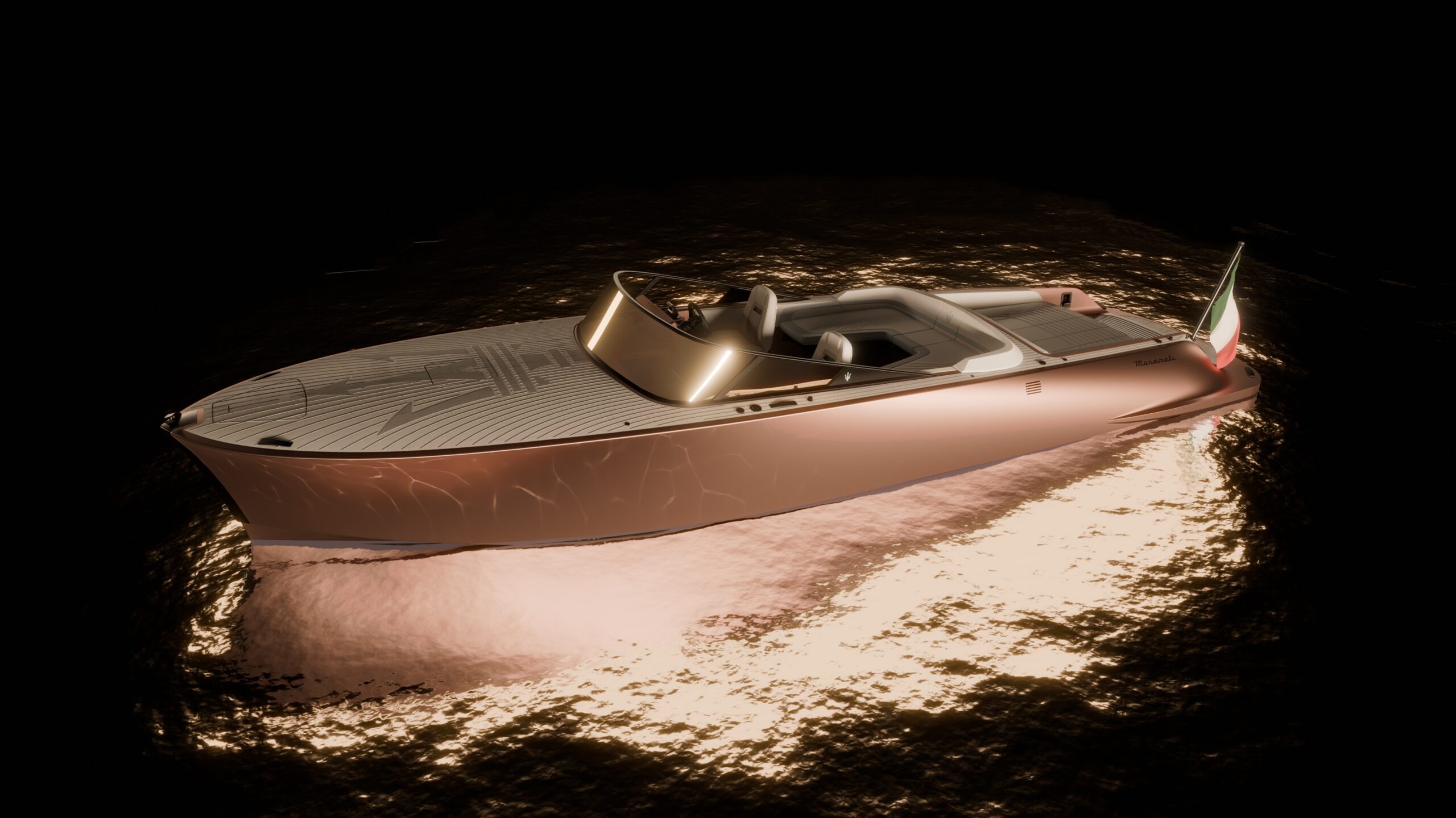Italian automaker Maserati disproves the fallacy that electric boats are slow and too heavy to float with one of its newest collaborations. The Tridente, a 34-foot all-electric powerboat that carries eight passengers, is both fast and buoyant.
Maserati’s Tridente is a tender, which is another name for a smaller craft that runs back and forth from a larger yacht or ship. Cruise ships use tenders to shuttle passengers to shore, and yacht owners use them as an accessory. This tender is battery powered and capable of 43 miles before requiring charging at a speed of 25 to 40 knots (roughly comparable to 28-46 miles per hour on land).
Boasting a radical decrease in noise pollution and emissions from gas-powered boats, the Tridente is constructed with a lightweight carbon fiber hull in cooperation with American company Hodgdon Yachts, a boat builder from Maine. Technology firm Vita Power provides the proprietary software and hardware that propels the Tridente with two motors making a combined 600 horsepower.
“Not only do electric boats run all day without emitting a single gram of CO2, they also eliminate the negative effects of engine noise, fuel slicks, and bilge water on the marine environment,” Vita Power says on its website.
If the future of boating is quieter and cleaner, it sounds lovely. Here’s all the details we have so far on Maserati’s contribution to the cause.
Electric boats are uncommon but growing in notoriety
Vita Power says it built the first electric powertrain compatible with high-speed DC charging. In the Tridente, Maserati claims the luxury motorboat can be recharged up to 90 percent in under an hour. While it may be odd to imagine DC fast chargers at a boat dock, it’s not beyond the realm of possibility and it’s not the only way to power these boats. Those leaving their electric boat at the slip can use a slow-drip household outlet for prolonged charging sessions as well.
Klaus Busse, the global head of design for Maserati, also sketched the silhouette of the new GranCabrio, the automaker’s new 761-horsepower electric convertible.
“Maserati and Vita Power share the same vision on electrification and both build the vehicles of the future, based on reduced environmental impact, improved customer experience, advanced technology, high quality and sophisticated materials,” Busse says.
Electric boats aren’t new, but they’re still uncommon. Technology and energy companies are coming up with new ways to power watercraft, including battery and solar power, too. Vita Power says surplus energy generated onboard the tender’s companion ship can be harnessed for charging. Italy-based Silent Yachts says its tenders can be connected to any Silent yacht and recharged directly through the energy produced by its solar panels. Even hydrogen is a possibility, as companies like Yamaha have been testing prototype fuel systems for outboard motors.
The Tridente is reserved for the super-rich: It takes about 10 months to build and costs upwards of $2.6 million. However, the yacht tender represents the proliferation of electric-powered vehicles and is part of a trend the public has been puzzling about for more than a decade. Over time, the technology could trickle down into a more affordable bracket.
Beyond boats, Maserati is all-in for battery power
Tridente represents Maserati’s commitment to a high-tech, sustainable lineup, which includes its vehicles; the brand says its entire range will be electrified by 2028. Maserati put an exclamation point on that goal with the unveiling of the GranCabrio EV in April.
Billed as the first all-electric convertible in the luxury segment and the fastest electric convertible on the market, Maserati’s GranCabrio Folgore is nearly identical to the GranTurismo Folgore coupe. It costs about one-tenth of a Tridente tender at $220,000 and goes five times further on land with a 233-mile range.
The Gran Cabrio Folgore uses three motors, not two like the Tridente. It’s expected to zoom from zero to 60 miles per hour in less than three seconds, and will be available stateside starting in 2025.
While infrastructure and production challenges continue to challenge EV adoption, all-electric powertrains have shown their capability for speed, instant torque, and fast charging. If the Tridente is any indication, watercraft isn’t far behind.


